Is EastWest’s Fantasy Orchestra the one sample library to rule them all?
Impeccable sounds, rare instruments, and a new Orchestrator plugin make EastWest the unrivalled champion of fantasy scoring
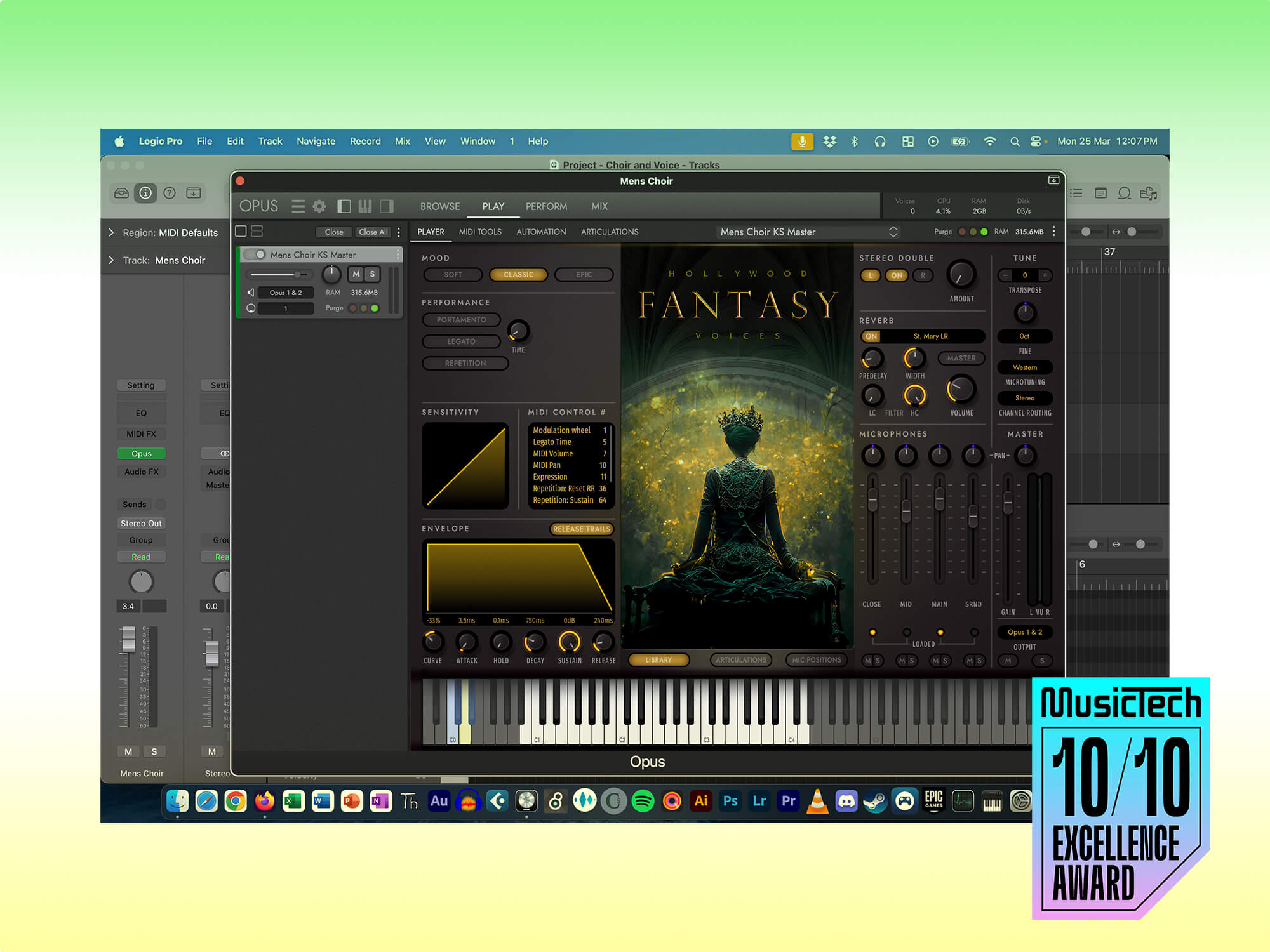
EastWest Fantasy Orchestra
Review Overview
Our rating
10
Our verdict
⊕ Sections work wonderfully alone or in combination
⊕ Orchestrator is a huge time-save with great presets
⊕ Extremely easy to use with the Opus Player interface
⊕ Extremely easy to use with the Opus Player interface
⊕ Massive added value for Composer Cloud+ subscribers
⊖ High price tag as a standalone purchase
$995 (currently on sale at $389), or as part of Composer Cloud+ subscriptions, soundsonline.com
Last year, EastWest set out on a quest: capture the sonic essence of fantasy scoring, tame it into something usable, and place it in the hands of film, TV, and game composers worldwide.
The first offering, Fantasy Strings, got full marks from us here at MusicTech and, since then, each successive entry in the series has gone from strength to strength. Joining the string section, we now have brass, woodwinds, percussion, choir, and a new version of the all-powerful Orchestrator plugin.
The quest is complete, and it’s time for us to take a step back to appreciate the grandeur of Fantasy Orchestra as a whole.
What’s in the EastWest Fantasy Orchestra?
Let’s begin with the winds. Gone are the traditional flutes, bassoons, and oboes; instead, we have a collection of instruments that you might not know by name but you will instantly recognise when you hear them. There’s the soft, woody sound of renaissance flutes, the even softer and woodier ocarina, the sonic power of Ireland’s uilleann pipes, but, for my money, the Irish whistles are the star here.
There are four whistles on offer. In the upper register, we have a high B flat whistle with a rich and warm tone that works well for solo melodies. By contrast, the D whistle has a bright, almost cutting tone that can easily be heard amongst a thick musical arrangement. The low whistles have an overall darker and softer sound, but the differences between the low D and E flat whistles are fairly subtle; arguably, the low D whistle sounds a bit more breathy.
Hugely versatile, they’re perfect for fast, energetic scoring, or for slower, emotive passages – and all of them deliver that iconic timbre we instantly associate with rolling green hills and magical creatures.
While the woodwinds, brass, and string libraries stay firmly rooted in European traditions, the percussion section ventures further afield with ceng ceng cymbals from Bali, ashiko drums from Africa, a selection of taiko drums from Japan, and many more.
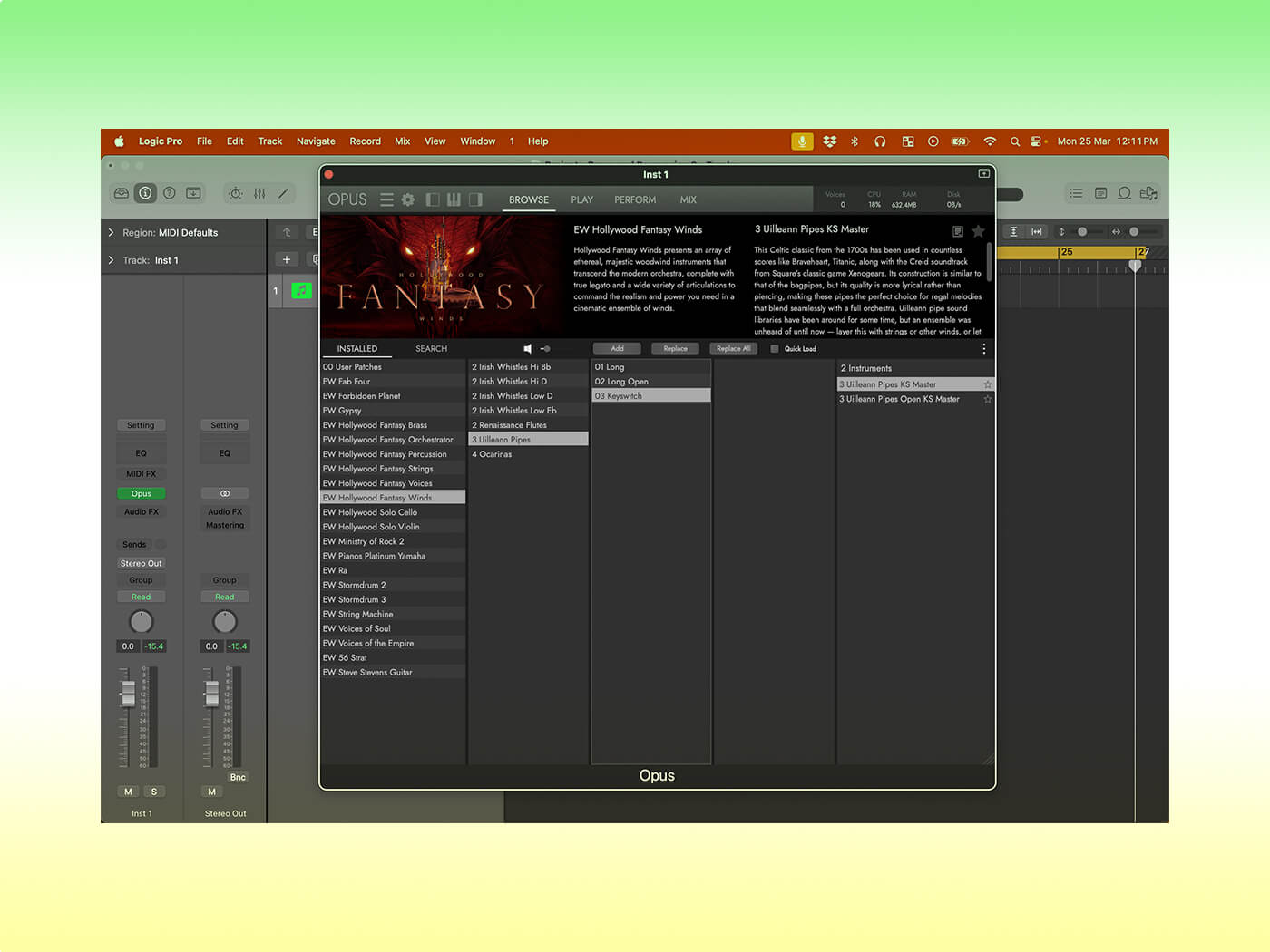
The workhorse is likely to be the Celtic Bodhráns, since these feel very tactile and energetic to play — an ideal option if you need to bring some forward motion to an action sequence. There’s also nice articulation options throughout this library, with lots of rolls, flams, and extended techniques to add some extra authenticity to a passage.
Plenty of lovely samples are available for the upper register, with crotales, an orchestral bell ensemble, and many small hand shakers. On the bottom end, the standouts are Gran Casas and the gigantic Nagado-daiko drum, which, in its low turning, boasts some of the deepest resonances we’ve ever heard in a sample.
Sounds that thump, rattle, and ring are all well and good but if you need to go epic, then the brass section will be your destination of choice.
The Wagner Tubas have a huge sound that feels expansive and heroic straight out of the box, while the Alpen Horns — four-metre-long instruments that were originally designed to be heard across the mountains and valleys of the Swiss Alps — carry a sense of high drama and brooding intensity that is genuinely special. Their sound is unique, with a hint of pitch instability that you won’t get from modern brass.
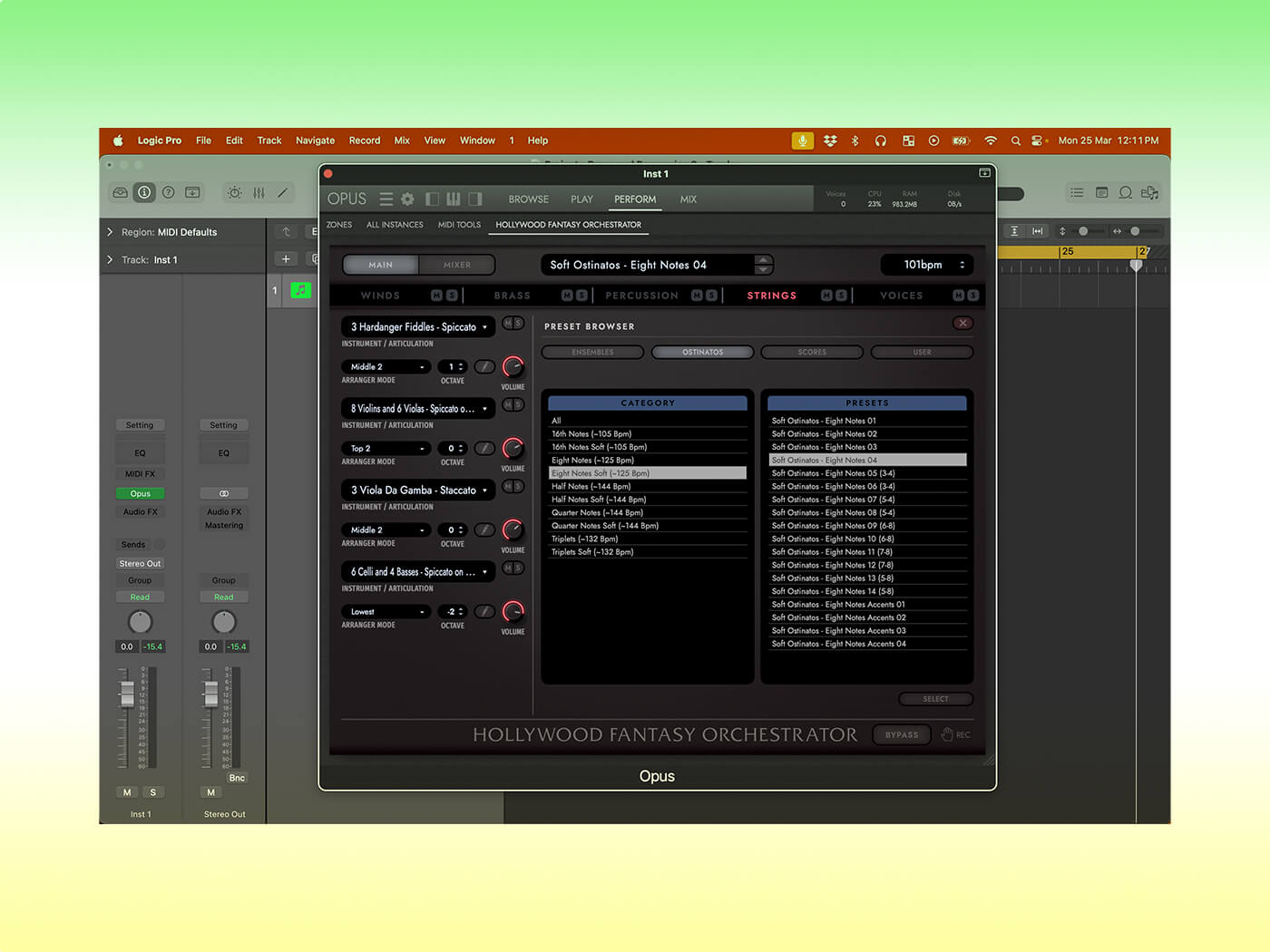
What’s really nice about the brass section is that it has scope; there are the warlike textures aplenty, grandeur and mystique, but it’s also easy to conjure delicate and emotive swells from the flugelhorns and low brass ensemble.
Last, but far from least, is the vocal library. Female, male, and mixed choir ensembles have been beautifully captured with four vowels and three dynamic layers to work with. The Opus player’s Mood presets demonstrate their worth here, easily showcasing the emotional range of these ensembles from melancholy to majestic.
The choirs are impressive, but the undeniable showstopper here is Merethe Soltvedt, whose solo vowels, melodic phrases, and words — sung in Quenya, J.R.R Tolkien’s language of the Elves – make this library worth considering even as a standalone collection.
Soltvedt’s performance is so evocative that it left us wishing EastWest had also included a solo male vocalist as well. Sure, it’s much more common to hear a solo female voice in fantasy scoring, but a male tenor would have provided a wonderful counterpoint here.
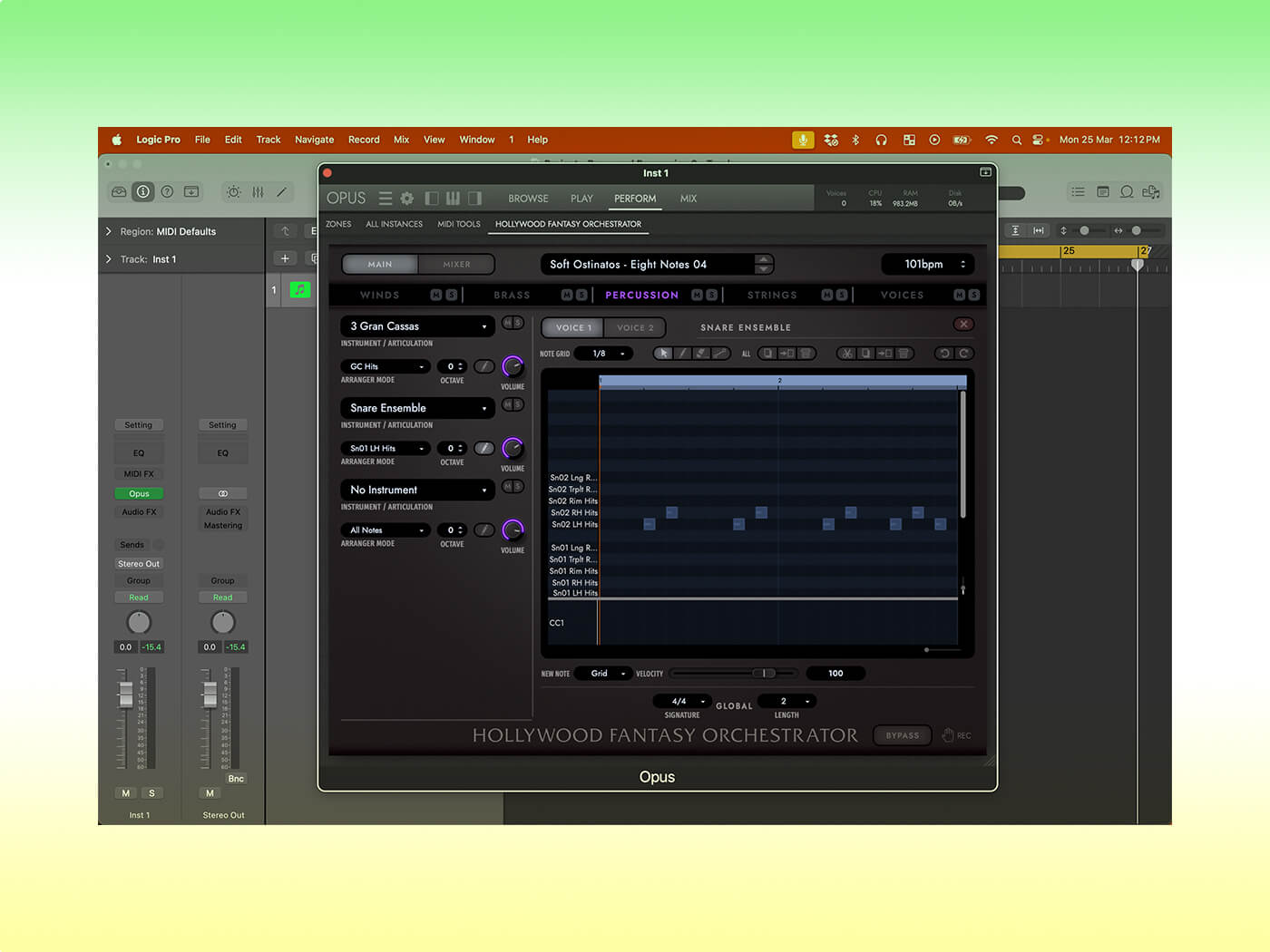
These instruments do admirably well in isolation, but make no mistake — this is a library with a cohesive vision behind it. All five sections integrate beautifully with each other to make a formidable scoring tool and, as you start to build a full orchestral arrangement, it’s hard not to be impressed with the sound quality EastWest has achieved.
Of course, a good fantasy soundtrack needs more than just authentic instruments, it also requires specific scoring techniques. In an ideal world, composers would have tons of free time to get comfortable with the musical styles of the middle ages or the Baroque period but, if you’ve got a deadline to meet, EastWest’s Orchestrator plugin is going to be a godsend.
As we’ve previously noted, Orchestrator is an incredibly powerful tool that streamlines key aspects of modern composing. The new version (developed specifically for Fantasy Orchestra) arrives with almost 500 genre-appropriate presets covering everything from ensemble arrangements, rhythmic ostinatos, to fully realised scores. It’s an incredible resource that can take in a few chords and give you back a near-finished scoring cue, and, if you want to dig deeper, there is plenty of scope to tweak these presets, pull them apart to see how they work, or build your own from scratch.
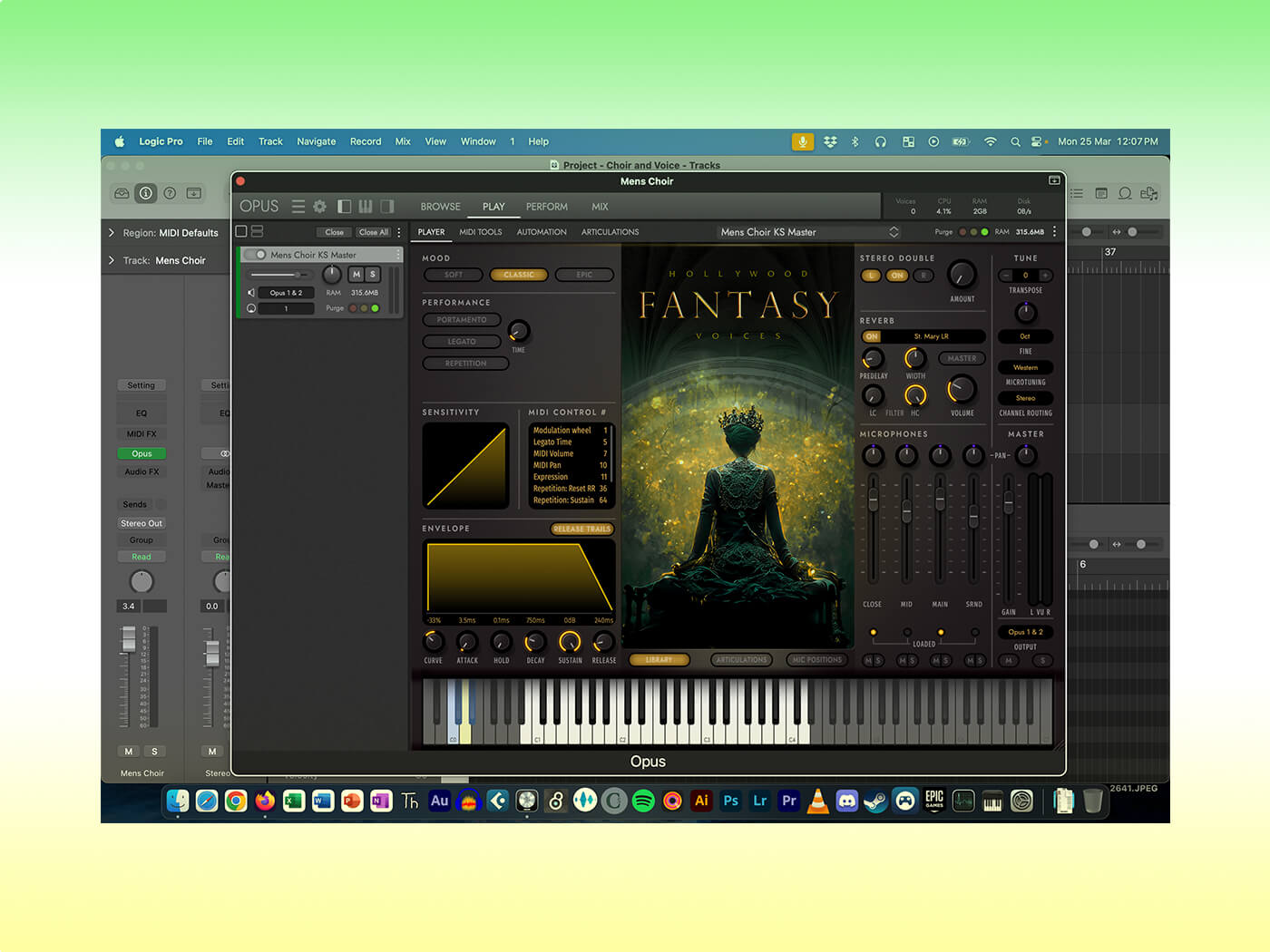
Should you buy the EastWest Fantasy Orchestra?
As a standalone purchase, Fantasy Orchestra comes in at $995 — a serious investment for any composer. Of course, with regular sales at East West, or a Composer Cloud+ subscription, it’s possible to snag this library at a much lower price.
If you’re looking for affordable alternatives, consider Sonokinetic’s Fantasy, or the small but lovely Conservatoire Collection from Soniccouture. However, there really is no other sample collection that offers a full orchestra with this level of sound quality, usability, and genre specificity.
EastWest has managed to stick the landing, producing a library that will surely be an essential resource for screen and game composers for years to come.
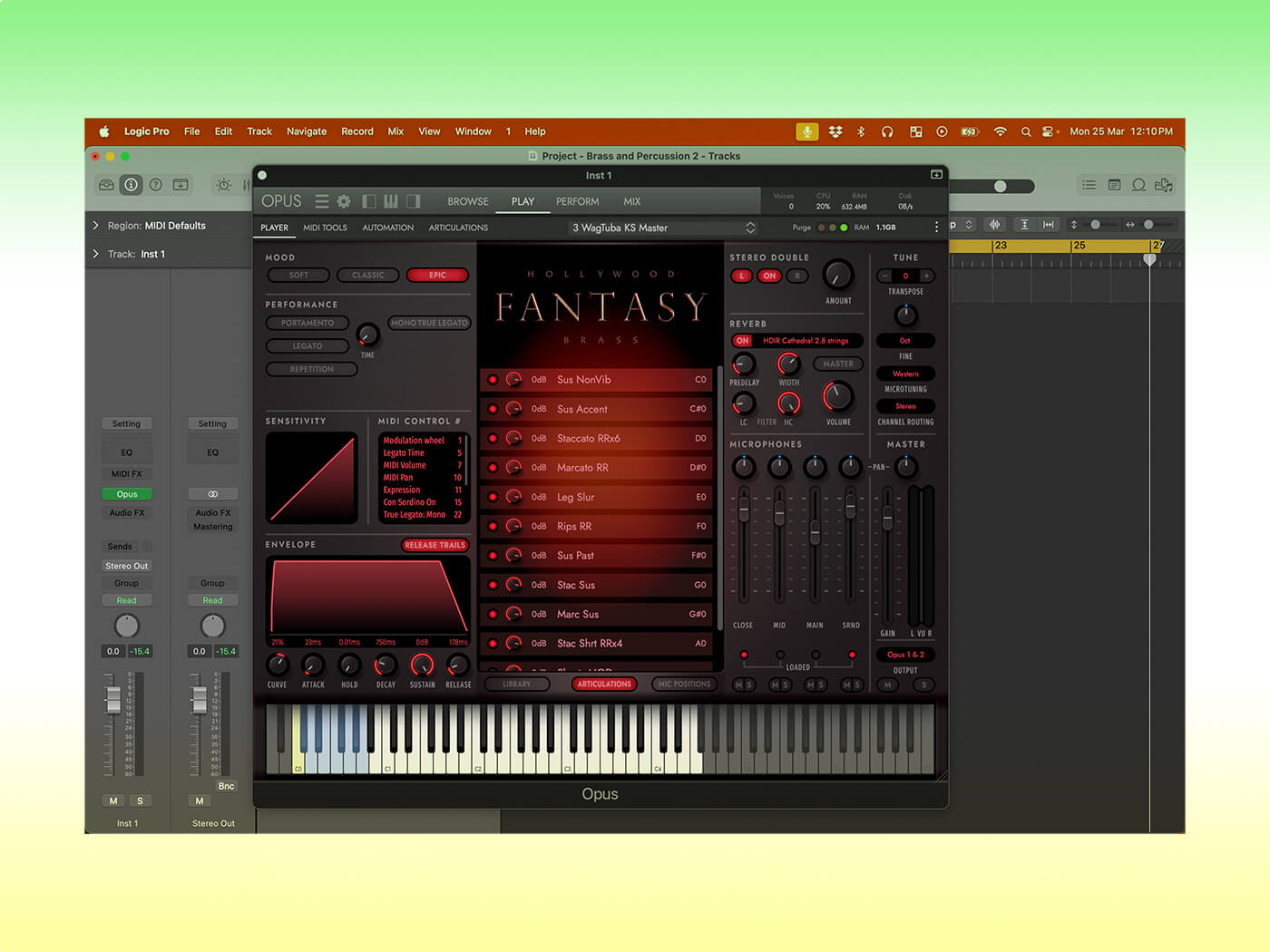
Key features
- 145 GB library
- 36 instruments across five orchestral sections
- 474 Orchestrator presets
- Available as part of a Composer Cloud+ subscriptions